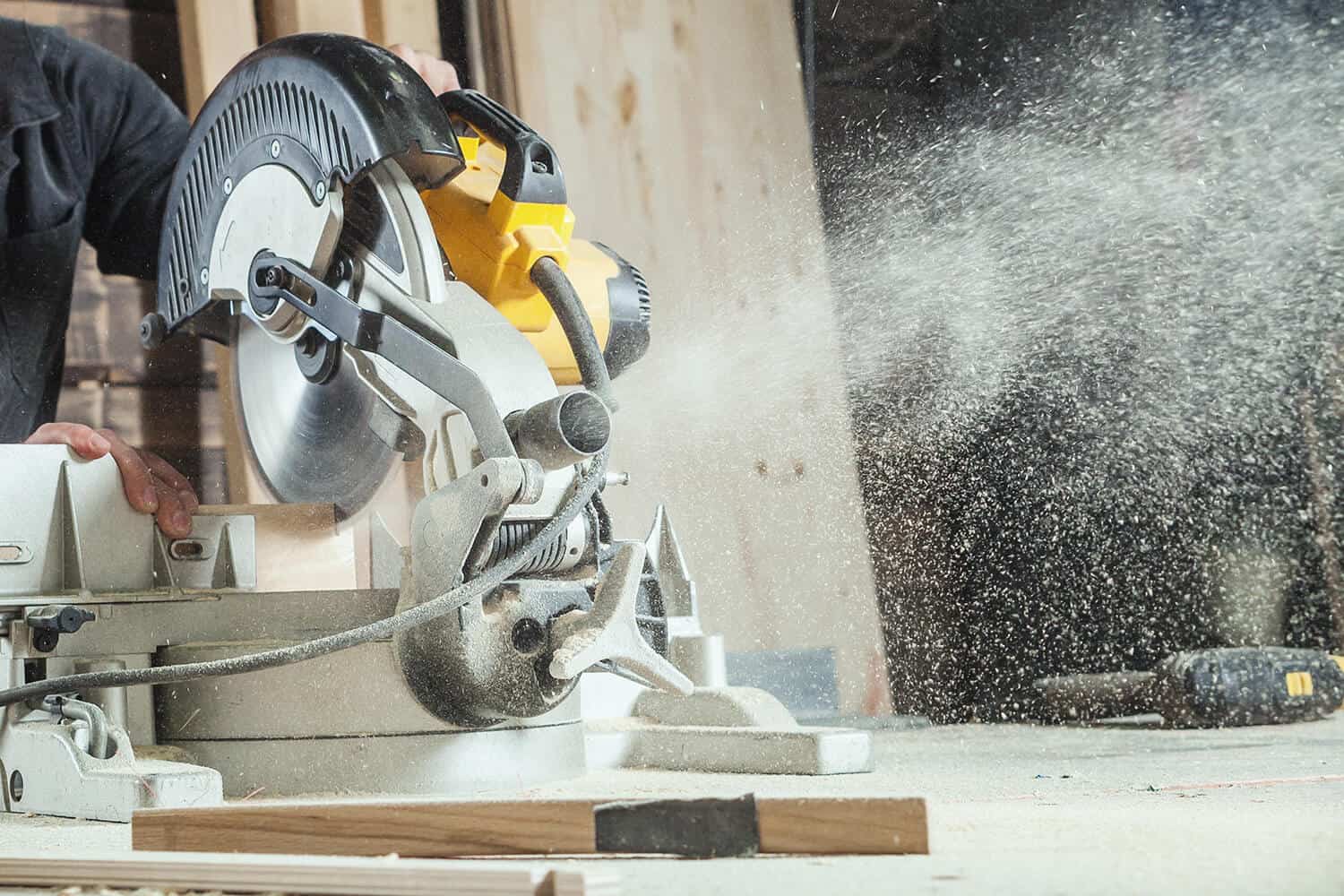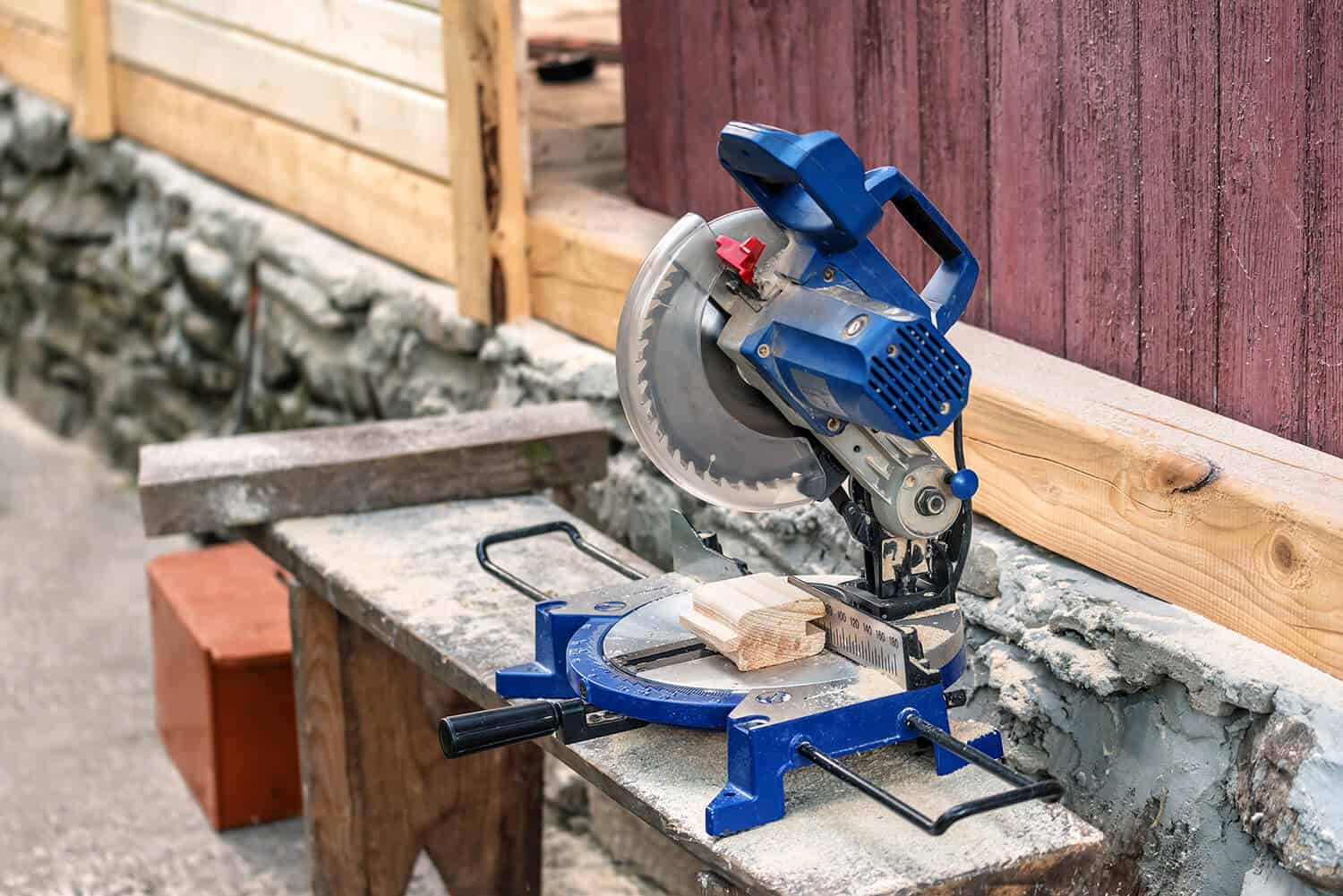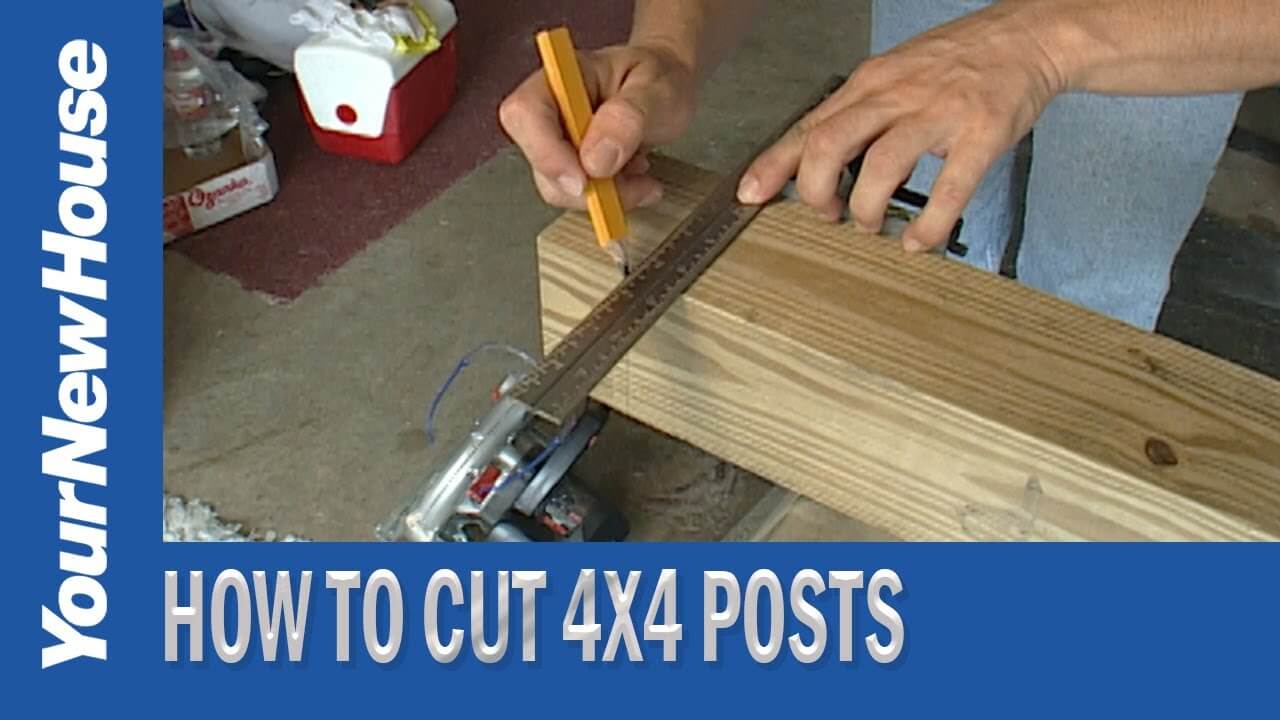Can a 10-inch Miter Saw Cut a 4×4 Post?
When it comes to cutting baseboard trim with a miter saw, you can’t go wrong. But one question frequently asked by amateur woodworkers is whether a 10-inch miter saw can cut a 4×4 post?
It’s a valid query that’s been addressed many times before, yet people still seem to debate the concerns of this game of inches and whether you should put your beloved 10-inch miter saw through such an ordeal.
Truth be told, there’s not a lot to unpack when it comes to cutting 4x4s with a 10-inch miter saw as opposed to cutting them with a beastly 12-inch sliding compound miter saw. The process is pretty straightforward, and the reasoning behind it is simple.
Here’s everything you need to know about how this type of saw will perform, how you should handle it, and if this is a type of cut you should make with a 10-inch miter saw.
Can a 10-Inch Miter Saw Cut a 4×4 in a Single Pass?
Understanding what a miter saw can do is essential before you start ordering lengths of lumber for any DIY project. And when it comes to cutting 4x4s for your new home DIY project, you’ll want to know what your 10″ miter saw is capable of from the get-go.
It may surprise you to know that the answer in question to cutting 4×4 posts with a miter saw is hard, YES! However, there are one or two requirements that a 10” miter saw must meet in order to make this somewhat challenging task happen.
One way to chop a 4×4 in a single pass is by adjusting the blade guard to essentially increase the saw-cutting capacity. If you can give the blade more clearance, then it should be possible to get a clean single pass cut through a 4×4 post, even when utilizing a 10-inch blade.
If adjusting your blade guard is out of the question (and should definitely be done so with caution), then the only way to make the cut in one go is to use a sliding dual bevel miter saw.
Sliding miter saws have more range of motion because you can tilt the head of the miter saw forwards. This obviously tilts the blade forward, thus increasing the cutting capacity of the miter saw.
Main Drawbacks of Cutting 4×4 with a 10” Miter Saw
There are many drawbacks that come from using a 10-inch miter saw to cut 4×4 posts or similar objects of larger dimensions. Perhaps the most significant is the additional time required to complete the task when compared to using a 12-inch miter saw.
There’s a very big difference in cutting time between 10” and 12” miter saws. Those extra 2 inches you get with a 12″ miter saw are typically delivered by high-priced sliding dual bevel compound miter saw models, which possess greater cutting capacity, versatility, and more power & torque when compared to a 10” miter saw.
Another thing to keep in mind is all the extra blade maintenance required. Ten-inch blades really don’t react well on 4x4s. They go dull much faster, and eventually, you won’t be able to sharpen them enough to make quality cuts in the future.
So, while in theory, you may think that using a 10” miter saw to cut 4x4s is the cheaper option; in reality, things are very different. You’ll actually save money using a 12” miter saw in the long run, even if purchasing a sliding dual bevel compound miter saw would be the higher initial investment.
The cost of blades, electricity, and everything else associated will add up really fast.
Miter saws are generally considered safe to use. However, kickbacks may occur if you’re cutting the wrong type of material with your saw. A 10” miter saw is likely to cause kickbacks when being forced to cut through thick and hard 4x4s.
Last but not least, the lack of torque and consistently pushing the 10” miter saw beyond its capabilities can overload and damage the motor.
This is a similar sort of story when attempting to cut metal with a miter saw. While both tasks can be successfully conducted (with some minor upgrades), you have to take some extra precautions into account.
And, keep in mind that trying such heavy-duty jobs with your miter saw may push the saw to its limits, and any damage incurred may not be covered by the warranty.
What Makes the 12” Miter Saw Superior?
If you really want to cut 4x4s reliably, and if you foresee many future projects involving 4x4s, then you’re asking the wrong question. It shouldn’t be a matter of whether a 10-inch miter saw can cut a 4×4, but rather what miter saw is better suited for cutting 4x4s?
The short answer is, that you need a 12-inch miter saw. And this is something you’ll have to consider when contemplating buying either a single bevel or vs dual bevel miter saw.
Both of these types of saws have different cutting capacities, and while that will be a major consideration, the cost will likely be a factor too. A 12″ sliding miter saw is costly.
A 12” miter saw clearly has a bigger blade. Which means that it can do longer cuts faster as well as wider cuts. The cutting capacity is so superior that even the cheapest 12” miter saws on the market will still cut through 4x4s faster and cleaner than the best sliding 10” miter saw.
Due to the sharper teeth and slightly higher TPI, the 12” blade cuts will be smooth. There’s also less chance of kickback, which makes operating the miter saw a lot safer.
What Can You Cut with a 10” Miter Saw?
So, is it possible for a 10-inch miter saw to cut a 4×4? The answer is clearly, yes. But, given the risk/reward ratio due to the extra inches, this isn’t the type of cut you should try to do with a 10” blade. There is some good news, though.
Just because a 10” miter saw isn’t an ideal choice for cutting 4x4s, doesn’t mean that it’s not a useful tool to keep in your workshop. In fact, the 10” miter saw is superior to the 12” miter saw in terms of mobility.
For most smaller home repair jobs, a 10-inch miter saw will suffice. They are lighter than a 12-inch miter saw, easier to handle, draw less power, and have advantages if you’re operating a smaller shop with restricted space.
What Does This Mean for the Average Homeowner?
Unless you’re a professional carpenter, there’s little to no reason to own both types of miter saws. If your daily activities don’t include cutting through 4x4s on a regular basis, then the 12” miter saw is something that you’ll rarely need.
Most art projects, repair jobs, DIY furniture gigs, and other projects, such as cutting tile, pipes, PVC, etc. can be done with a 10” miter saw.
If You Have To, Here’s How to Cut a 4×4
Assuming that you really have to cut some 4×4 studs and you can’t rely on anything other than your 10” miter saw, it’s best to know how to do it properly so that you’ll put as little stress as possible on the tool and its blade.
It’s as much about the preparation as it is about actually making the cut. There are four steps to follow. It’s not rocket science, but the rules featured below are very important.

Marking the Stock
Grab your pencil and a square to make the appropriate measurements. Draw a line or mark on the 4×4 clearly, to ensure some degree of accuracy on the cut. Make sure that you mark the 4×4 on all sides. You’ll see why in the last step.
Configuring the Saw
After the stock has been marked, you’ll have to prepare or configure the miter saw. Stabilize it to the workbench. It will need better stability than usual since the motor will be pushed to its limits and beyond.
Calibrate the blade’s angle so that it will fall straight down at a 90-degree angle on the stock. Always recheck the angle using a square. Do this to make sure that when you use the miter saw, the calibrations aren’t off and to ensure that the cut will be accurate.
Positioning the 4×4
Put the stock on the workbench and bring the marked area under the blade. If you don’t have to make repeated cuts, then feel free to fix the 4×4 to your workbench to avoid a kickback.
Cutting 4×4 Posts – The Right Way
Cutting the stock is where things get complicated. This is true whether you’re attempting such a cut with either a table saw or a miter saw. But, if you’re going to conduct this cut with a 10″ miter saw, this is how to get it done safely!
- Start your saw while the head is in its upright resting position. Bring it down slowly towards the mark while firmly pushing down on the side of the 4×4 to give it more stability.
- By pushing the blade slowly into the wood, you’re minimizing the risk of a kickback. After you make your cut on the first side, bring the blade back up and stop the saw. Flip the stock to expose another marked area and repeat the cutting process.
As you can see, it can take a lot of time to cut a 4×4 with a 10” miter saw for two reasons. First of all, the saw lacks the necessary torque for such thick pieces of wood. Secondly, in order to create a relatively smooth, clean, and accurate cut, you have to cut from all four sides.
One of the biggest mistakes that people make is adjusting the blade guard in such a way that they can push the blade through in a single pass or two passes. It may be faster, but not ideal if you want to avoid rough cuts and even damaging the miter saw.
By converging multiple cuts in the middle of the piece of 4×4 you avoid stressing the miter saw and the blade more than they can handle.
Now, this obviously won’t be easy the first couple of times, even though it looks like that on paper. Using a miter saw to cut trim is actually easier than cutting 4x4s with a 10-inch miter saw, as you can cut trim with a miter saw in a single pass.
It will take practice to get equal cuts on all four sides for a clean cut. It’s also something that will depend on the design of your saw and the construction of the blade guard.
Final Thoughts on Cutting 4x4s
Now that you no longer have to wonder if it’s possible to utilize a 10-inch miter saw to cut a 4×4, would you still dare try it? It’s a difficult cut, even if you use the recommended method previously outlined.
Plus, it’s also time-consuming, and merely using the right size miter saw to make this cut could be far more beneficial to the longevity of your miter saw. Why? Because abusing this type of cut will eventually lead to motor damage and many dull blades.
That said, buying and changing miter saw blades is something you don’t want to be doing regularly. It gets expensive.
That said, if you’re using a high-quality sliding dual bevel compound miter saw, life will be a lot easier due to the increased power and cutting capacity.



